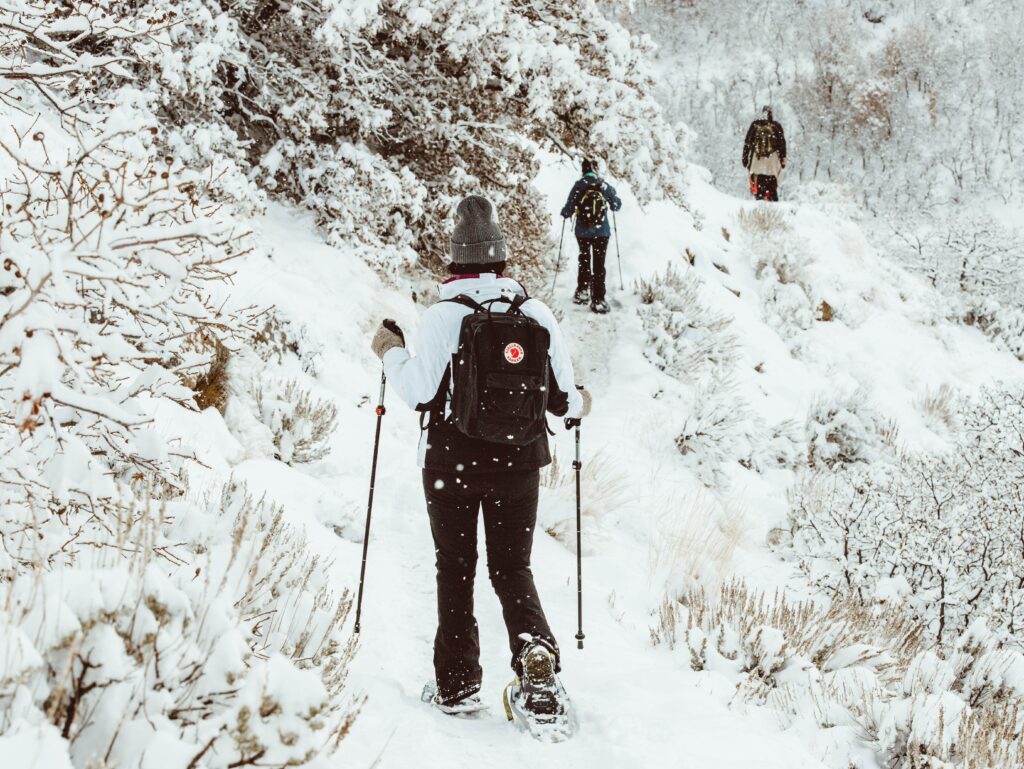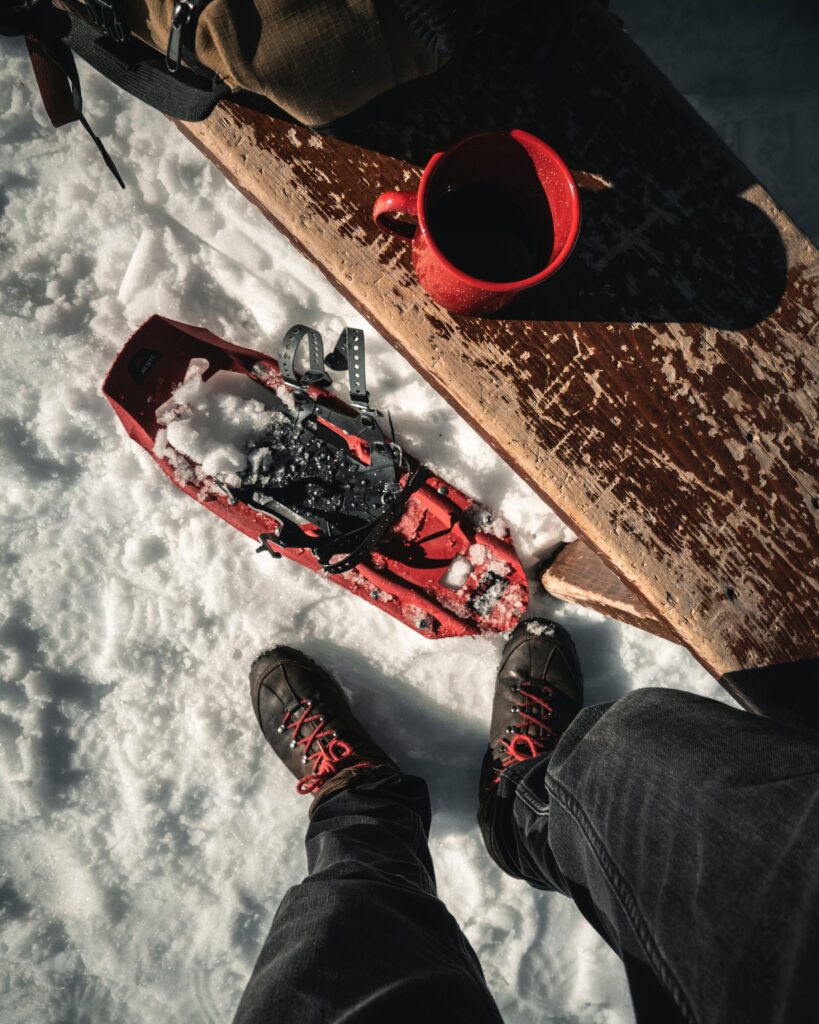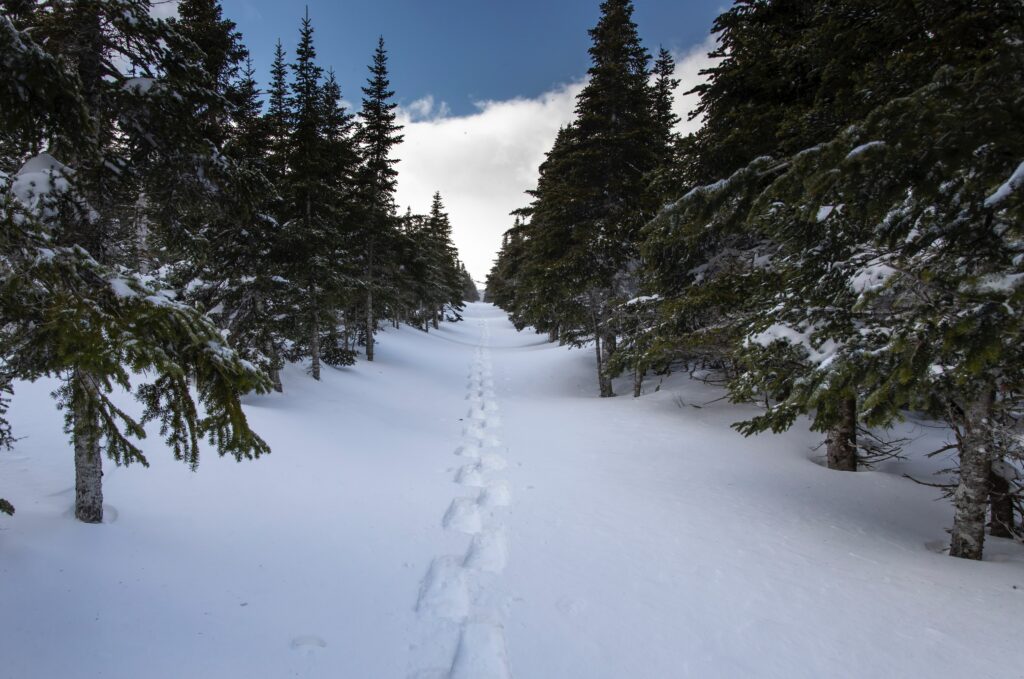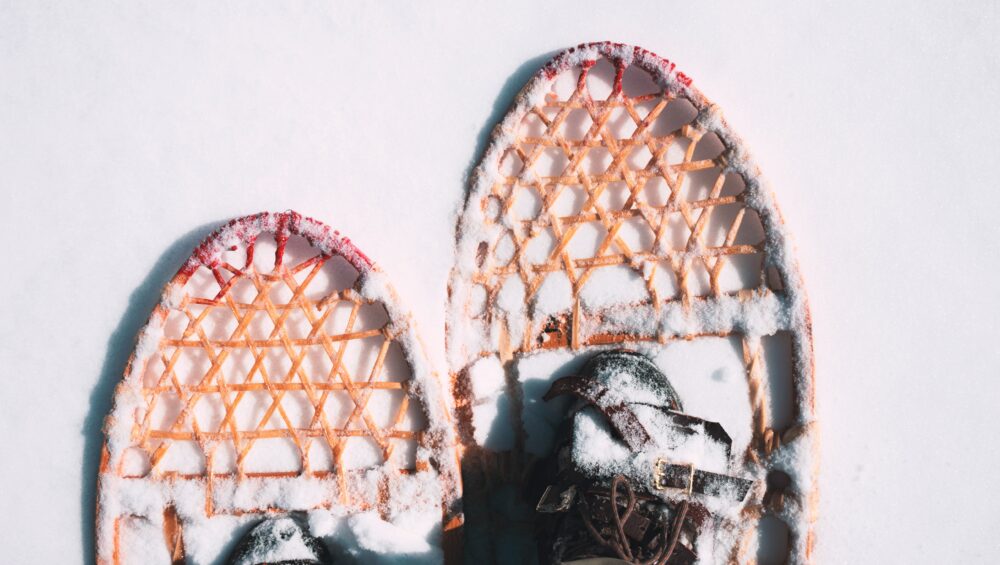Snowshoeing is a fun winter sport with a long history, invented thousands of years ago and used by the humans that migrated across the Bering Land Bridge to North America. It is an excellent way to exercise and enjoy the great outdoors during the winter when snow is on the ground. If you are looking to try winter hiking, you are in the right place. We will go over how to snowshoe, what gear is needed, and where to snowshoe near Colorado Springs.
What Is Snowshoeing?
Snowshoes are specialized gear with oversized footprints to allow users to walk over snow rather than through it. By increasing the surface area and distributing weight, snowshoes make it possible to enjoy hiking year-round, even when your favorite trail is buried beneath a foot of fresh powder.
There are different types of snowshoes depending on the terrain you plan to hike. In some styles, the heel lifts in order to allow you to walk up steep slopes comfortably. Another key feature is crampons, which provide more traction for steep and icy areas. Depending on your weight, you may need larger snowshoes to get the necessary floatation (to keep you on the snow’s surface). This is why snowshoes are a personalized, specialized piece of gear.

What Gear Do You Need to Snowshoe?
In addition to the proper snowshoes, there are a few other pieces of gear you will need for your first snowshoeing adventure. As with all winter hiking, you will need solid hiking boots. They should be warm and waterproof. Insulated boots are a great way to stay warm, but having them requires the right socks, too. Because insulated and waterproof boots are not breathable, you will need moisture-wicking wool socks to avoid cold, sweaty feet.
The rest of your winter clothing should be similarly moisture-wicking in the base layers and insulating in mid-layers. Depending on the conditions, you may need an outer shell that is wind and waterproof to stand up to the elements. These are the essentials of what to wear when hiking in Colorado, and these proper layers will keep you warm and safe on your snowshoeing trip.
When you go to buy or rent snowshoes, you should also get snowshoeing poles. If you already have trekking poles, you just need to add baskets. Baskets are the little plastic circles at the bottom of the poles to keep them from sinking too far down into the snow. Snowshoeing poles are extremely helpful for providing stability on the trail. Especially when traversing slippery conditions or going up or down a slope, poles will keep you balanced and upright and help distribute weight off your knees.
Regarding the gear you will need to pack, you should always bring the Ten Essentials on any trip into the wilderness, especially water, snacks, a first aid kit, and an emergency shelter. When hiking in the winter, there is one more thing: Avalanche safety gear, like a probe, beacon, or airbag, is the final addition to your pack for winter hiking safety.

Basic Snowshoeing Techniques
Let’s go over the basics of how to snowshoe on any given terrain. To avoid stepping on the frames of your snowshoes, you need to adopt a wider walking stance. This will surely cause initial discomfort initially, and you will feel your hips on your first winter hike, but it will improve.
When snowshoeing uphill in powder, you want to kick your foot into the snow in order to create a level surface to stand on. If the snow is harder, you will skip this step and rely solely on the friction from your crampons. The second part of any step, bringing your foot down, is important either way. When you step down, you need to plant your foot hard to make sure the crampons grip instead of slip.
When snowshoeing downhill, you should start by elongating your poles if they are adjustable. You will want them out in front of you so you can balance and avoid slipping. You will need to tilt your weight back slightly. If you feel yourself start to slip, you can simply sit down and reset.
Lastly, you will likely find yourself at some point walking sideways across a slope. “Side-hilling” requires a specific technique similar to snowshoeing uphill. You need to push your snowshoe into the side of the mountain in order to create a level step for yourself. In order to keep your balance, be sure to keep your weight on the uphill side of your snowshoe.
Where to Get Started Snowshoeing near Colorado Springs
There are tons of options for snowshoers looking to hit up a trail in Colorado. An easy rule of thumb is that you generally can snowshoe anywhere you can hike. Popular hiking trails near Colorado Springs stay open year-round to accommodate winter enthusiasts like snowshoers.
State and national parks and forests are a great choice as their well-manicured trails will be easy to follow even when hidden under snow. The beautiful and extensive Rocky Mountain National Park has ranger-led snowshoe walks throughout the winter to get you started on how to snowshoe, including basic technique and safety.

Proper Snowshoeing Etiquette
Wherever you end up, it is important to keep in mind that you will not be alone on the trail. Many trails might be open to cross-country skiers or even snowmobilers. If you do find yourself on a mixed-use trail, here are a few etiquette tips.
When snowshoeing or winter hiking generally, it is nice to stay in a single file line on the outskirts of the trail or path. This is helpful for cross-country skiers who prefer a smooth surface and likely pay a higher usage fee to have the trails groomed. You should also give right of way to cross-country skiers as it is harder for them to navigate around you than for you to simply step to the side.
It is best to avoid snowshoeing on routes with snowmobiles. If you find yourself on one by accident, make sure to give them the right of way. You should keep your eyes and ears open and your head up. Listen for the sounds of approaching vehicles and be aware of your surroundings. You should step out of the way, but try to remain visible. This way, both you and the driver can see each other and cross paths safely.
Final Thoughts
Snowshoeing is a rewarding winter activity that not enough people try. It is a great workout, a fun way to get into nature in the snowy months, and it provides beautiful sights of unspoiled winter wonderlands. With the right gear and a little lesson on how to snowshoe, you can enjoy a safe and fun adventure outdoors.

